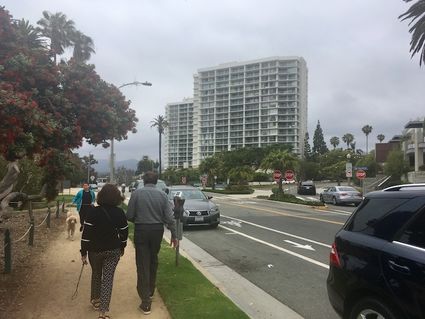Large Crowd Expected at Council Meeting Over "Rent Freeze"
Renter's Group Proposes Rent Rollback
June 20, 2019
Based on the public response to a proposed "Rent Freeze" a large crowd of renters and apartment owners is expected at Monday's council meeting. The discussion will include the "Rent Freeze" (Temporary Moratorium on Residential Rental Increases) and Other Tenant Protections.
A group calling itself Protect Culver City Renters submitted a flyer which is included in the council's agenda. The group does not reveal any information about who they are, who their members are, how many members they had, nor did they provide any contact information.
They did however put forth several proposals as follows:
1) The Rent Freeze:
A temporary limit on annual rent increases for existing tenants.
a) How much? We recommend a 3% annual cap, like LA County. This allows rents to
more than keep up with inflation, which has been below 3% for the last decade.
b) How long? We recommend 12 months, a little shorter than LA County's. It is
unrealistic to expect permanent policies to be adopted in a significantly shorter
time, and the freeze can always be terminated at an earlier point.
c) As of when? We recommend that the 3% cap apply to the base rent as of April 23,
2019, when the City held a public forum on housing policy, and a number of
speakers advocated rent regulations to loud applause. This protects tenants against
any attempt by landlords to pre-empt rent regulation with rapid rent hikes. Similar
provisions have been included in most other rent freezes.
d) What exemptions? The state Costa-Hawkins law already exempts all buildings built
in the last 25 years and any single-family houses or condos. No further exemptions
are necessary.
2) Just Cause Eviction Protections
Currently, Culver City allows landlords to evict tenants on a whim. "Just cause"
protections would mean that tenants can only be evicted for a good reason. These are
generally divided into "for cause" evictions where the tenant has violated important lease
provisions, such as not paying rent or creating a nuisance. In addition, "no fault" evictions are
when the tenant has done nothing wrong, but nonetheless the landlord has a right to put the
property to another use, ranging from moving in themselves to tearing it down and rebuilding.
Just-cause protections are essential to an effective rent freeze. That is because, under
Costa-Hawkins rent freezes apply only to current tenants, not to new leases. Therefore,
landlords may attempt to get around a rent freeze by evicting existing tenants, then raising the
rent for the next ones. All the recent rent freezes have included just cause protections for the
duration of the freeze, with LA County again providing a detailed model.
3) Relocation Assistance
Just-cause policies allow for no-fault evictions where the tenant has done nothing
wrong. This can create loopholes that allow landlords to get around a rent freeze by creating a
vacancy or by switching to a different revenue model, like converting the building to
condominiums. These maneuvers are a particular threat in Culver City's rapidly rising housing
market.
A standard way to help displaced tenants, and to balance the landlord's economic
incentives is to require relocation assistance for tenants facing no-fault evictions. This helps
them cover the expenses of moving and finding a new home. A related requirement is advance
notice. Such provisions are common in permanent renter protections. They are especially
important to include in a Culver City rent freeze because we already see landlords tearing down
and reconstructing apartment buildings to take them upscale. For a temporary rent freeze, a
simple approach would be to require $1,000 plus three months' rent, measured as the greater
of either the tenant's current rent or the federally-established fair market rent for a similar
apartment in LA County. Glendale's ordinance provides a starting point.
Rents are already high and are caused by a critical shortage of housing and overregulation by government agencies along with the continue influx of residents to Southern California. According to a story by KQED News in the bay area. "Just to keep up with population growth California needs 180,000 new homes each year. And California has been averaging less than 80,000 new homes."
Stanford University conducted a study on rent control. One of the researchers was Rebecca Diamond.
Diamond states "(Rent control) can create big distortions of forcing people to stay in the 'wrong' apartment. You can imagine an old lady living in a four- bedroom apartment because it's so much cheaper than a one bedroom, and on the flip side you can imagine a young person who has kids staying in a studio because they can't pay super expensive rent elsewhere."
On the flip side Tenant advocates say that rent control is important for preserving diversity in cities by protecting vulnerable populations




















Reader Comments(0)